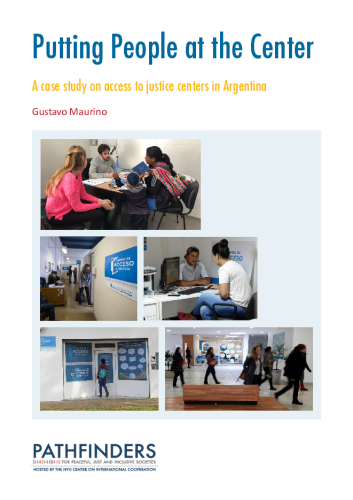The Access to Justice Centers in Argentina are small offices, often located in low-income neighborhoods or in informal settlements, where a team composed of a lawyer, a social worker, a psychologist, and an administrative agent provide diverse justice services—such as legal information, representation, and advice, assistance with administrative procedures, community mediation. The Centers embrace the people-centered approach to justice services. Anybody can go to an Access to Justice Center and ask for help to solve any justice issue they might have (from a simple administrative issue to a multidimensional, complex one). The team would provide interdisciplinary and comprehensive support to channel and solve the problem while promoting legal empowerment by enhancing the client’s legal capabilities. There are around a hundred Access to Justice Centers in the country. They are run by the federal government, under the National Directorate for Access to Justice at the Ministry of Justice and Human Rights. The program started in 2007, as a pilot in the city of Buenos Aires, and was quickly expanded nation-wide between 2014 and 2015.
As the Pathfinders Justice for All report¹ has documented, the most prevalent justice needs are usually handled and solved outside traditional formal justice institutions—or remain unsolved. There is a need for institutional innovations that bridge the justice gap with primary justice services that are closer to people, flexible, and executed with a problem-solving approach. This case study is a contribution to the global conversation about how to advance making justice services more people-centered. It elaborates on the experience of designing and implementing the Access to Justice Centers program in Argentina; a nation-wide, people-centered, non-judicial, community justice service program in a middle-income country.
The study is organized in three parts:
- Design: It provides the general background of the program, describes the theory of change, the core methodological elements, and the main strategic decisions that shaped and defined the identity of the program during the analyzed period.
- Implementation: It covers the main challenges identified and the initiatives, strategies, and decisions adopted for realizing the Access to Justice Centers’ vision and theory of work.
- Finally, the last part presents specific pilot and experimental initiatives developed to adapt the justice services to address specific institutional challenges and social needs identified as the program evolved.
